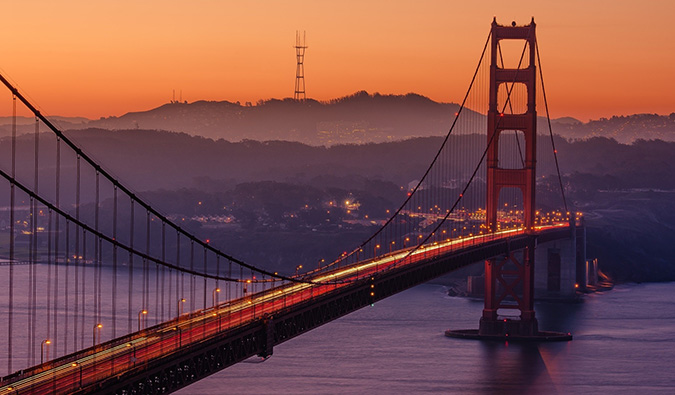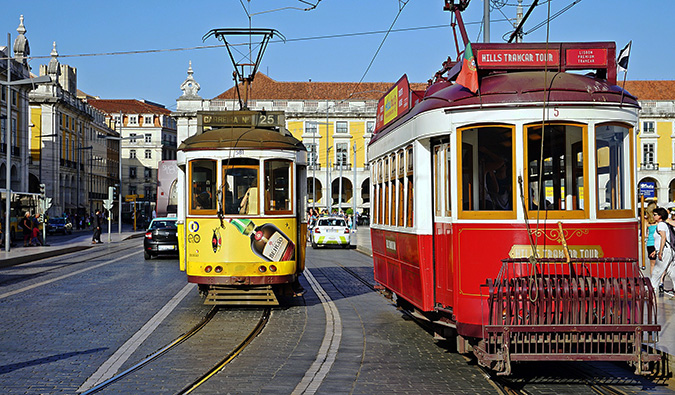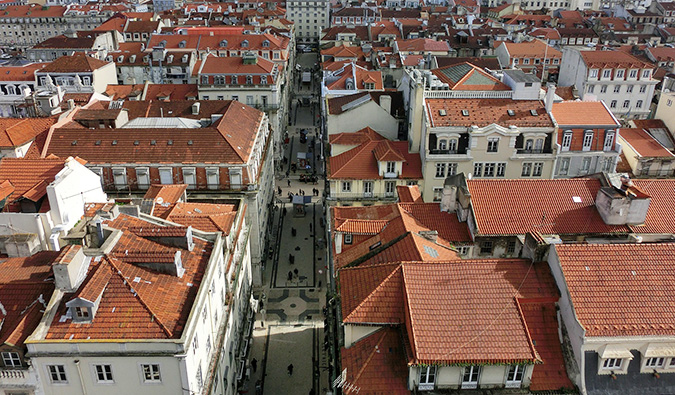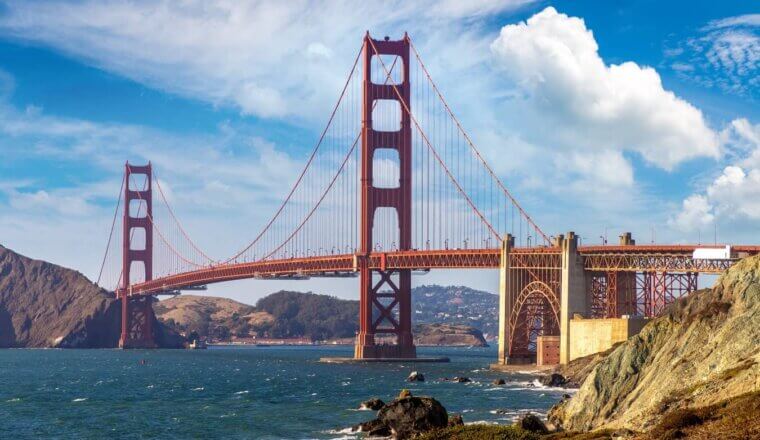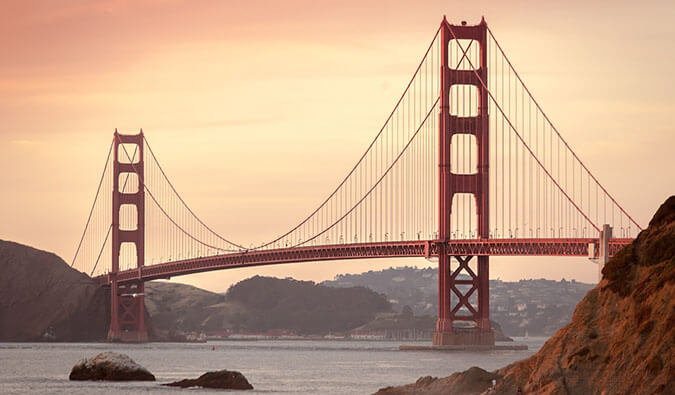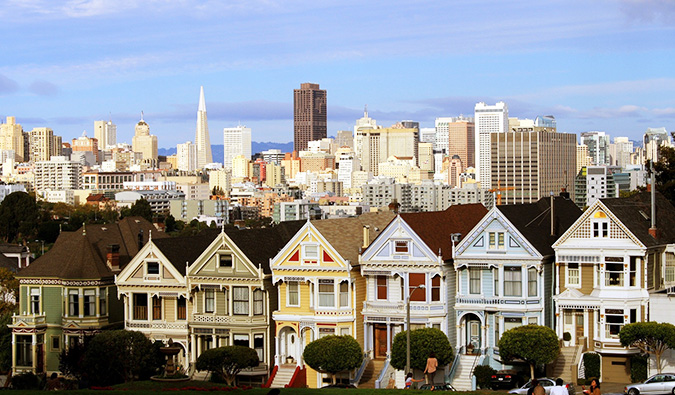
Last Updated: 11/4/18 | November 4th, 2018
For years, I’ve been able to explore destinations at my own pace. Two days, two weeks, two months, it didn’t matter — I had as much time as I needed. In my view (still unchanged), when you travel, less is more. It’s better to see fewer attractions and go deeper than cast a wide net and go shallow. You get to know the people and places better, and you won’t rush, stress, or spend a lot of money on transportation.
Sure, I understand the desire to load up your itinerary when you only have a couple of weeks per year available to travel. Who knows when you might be around that way again?
But I’ve always counseled against it. You’ll spend too much time running around, traveling between destinations, packing, and unpacking. Heck, I once tried to see most of Dublin in 24 hours, which was just insane.
In March, I made my first visit to San Francisco as part of my book tour. I spent only 3.5 days in the city and, unlike most trips, when I can stay as long as I want, I had to cram everything into a very short period of time. I knew I’d only scratch the surface, but something would be better than nothing.
What did I learn from this experience?
Three days is not nearly enough.
I found myself running around to see the major sights, squeezing in the best restaurants, getting exhausted walking up all those hills, fitting in meet-ups, and overall, just being tired of always feeling like I had to race around town.
Having to sightsee in just a couple of days was my own personal hell. Places become such a blur that you feel like you end up with only photos instead of memories.
I walked away from San Francisco with two realizations: (1) I need to go back, because what I saw of it was amazing, and (2) there has to be a better way to experience short-term travel than running around like a chicken with its head cut off.
My trip to Lisbon gave me an opportunity to find the better way. I only had three days again, but I was determined not to repeat my experience in San Francisco.
This time, I did it differently. This time, I came with a plan.
No, I didn’t regiment every second of every day. Travel is about letting things unfold and happen to you naturally, not rigidly planning your journey.
But I wanted to walk away from Lisbon without feeling exhausted but also without feeling that I hadn’t seen anything.
Having a general idea of what I wanted to see and do before I went allowed me to better prepare, organize my visit, and pace myself, so I could have some downtime and opportunities to just go with the flow. I missed a lot of stuff the first time I was in the city last year.
I decided that on the first day I would wander the city center, visit the history museum, and see Sé Cathedral and São Jorje Castle.
On the second, I would go to the beach outside of town.
On the third, I would take a city walking tour offered by the hostel, visit the lookout tower, and explore a few other churches.
I figured this rough outline would give me enough to fill each day — but not enough to make it too packed.
So how did it work out?
Despite being super jet-lagged and sleeping through much of the first day, I found that creating a framework allowed me to check off most of my list without feeling I was running around like crazy. I was able to see what I wanted to see while still finding time to add in local recommendations.
And while I rearranged the order of everything when I got into town, by breaking up the days into “bite-sized portions,” I found I could explore at a relaxed pace.
I applied the same strategy when I was in Madrid a few days later, to the same effect. I had four days in town, and I started with a plan.
I made a list of all the sights in Madrid that I wanted to see and then each day went through that list: botanical gardens, food tour, walking tour, art museums, nightlife, cathedral, and the royal palace. I didn’t get to everything, but I found that creating a list helped set a pace that made exploring a giant and sprawling city in a few days seem less overwhelming.
So the takeaway?
If you are trying to explore somewhere new and have only a short period of time to see it, it’s best to go in with a rough itinerary to maximize your limited time. By doing some preliminary planning, you can avoid feeling overwhelmed and instead focus on actually enjoying your trip, seeing what you want, and still finding time to let the road take you to interesting places.
I get many emails asking for help with itineraries and hour-by-hour planning for trips, and I see many people trying to cram too much into a short period of time. In my experience, however, creating a framework for your trip instead — and filling in the smaller details along the way — is a much more relaxing way to not only plan a trip but also see your destination.
Book Your Trip: Logistical Tips and Tricks
Book Your Flight
Find a cheap flight by using Skyscanner. It’s my favorite search engine because it searches websites and airlines around the globe so you always know no stone is being left unturned.
Book Your Accommodation
You can book your hostel with Hostelworld. If you want to stay somewhere other than a hostel, use Booking.com as it consistently returns the cheapest rates for guesthouses and hotels.
Don’t Forget Travel Insurance
Travel insurance will protect you against illness, injury, theft, and cancellations. It’s comprehensive protection in case anything goes wrong. I never go on a trip without it as I’ve had to use it many times in the past. My favorite companies that offer the best service and value are:
- SafetyWing (best for everyone)
- Insure My Trip (for those 70 and over)
- Medjet (for additional evacuation coverage)
Want to Travel for Free?
Travel credit cards allow you to earn points that can be redeemed for free flights and accommodation — all without any extra spending. Check out my guide to picking the right card and my current favorites to get started and see the latest best deals.
Need Help Finding Activities for Your Trip?
Get Your Guide is a huge online marketplace where you can find cool walking tours, fun excursions, skip-the-line tickets, private guides, and more.
Ready to Book Your Trip?
Check out my resource page for the best companies to use when you travel. I list all the ones I use when I travel. They are the best in class and you can’t go wrong using them on your trip.
